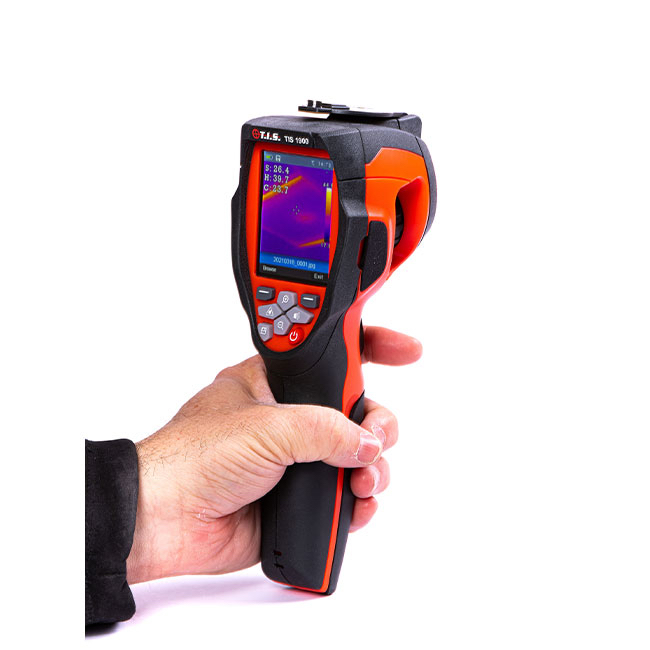A thermal imaging camera is a hand-held electronic device that creates an image of the temperature difference between objects within an observed space. This image is displayed on an LCD screen and can be recorded and watched in real time and captured for sharing or viewing later. The display will also show data picked up by the camera, such as real-time temperatures detected.
Thermal imaging cameras have become commonly used in electrical safety testing, and are a reliable, non-contact method for detecting heat spots or unusual heat patterns in electrical panels, motors and other circuits. But what is the science and technology behind thermal imaging and how does the thermal imaging camera work?
What is thermal energy?
Any object that can absorb heat therefore produces heat energy. Such objects can show an irregular movement of molecules and atoms and these show up in the radiation of infrared light from the surface of these objects. This infrared light can be detected by thermal imaging cameras because it is visible within the infrared colour band, so this is used to identify and illustrate the thermal radiation being emitted by these objects, and is then converted into an easily interpreted visual image.
How is thermal energy detected by a thermal imaging camera?
The two key components of a thermal imaging camera, such as the TIS 1900 supplied by Test Instrument Solutions, are the lens and the sensor. The lens will block out other visible lights and will only read infrared light, while the sensor picks up infrared light and with a microprocessor reads and processes the data and creates a display, which is the visual representation of the data using the infrared colour band spectrum. Both the lens and the sensor are extremely sensitive and can detect very small changes in thermal energy, and this won’t be affected by environmental conditions, ie. daylight/darkness/foggy/rainy conditions won’t influence the sensitivity of the data detected and hence the results displayed.
Thermal imaging is based on the perception of temperature differences between an object and its background and the conversion of that difference into a visible image. Two objects that are not heated up the same, ie. they don’t emit the same thermal energy radiation, will emit a different infrared distribution, so two objects with very subtle differences in temperature can clearly be detected and displayed by a thermal imaging camera. The bigger the difference between the infrared intensity of two objects, the easier it will be to detect in the visual image on the camera’s display, because there will be a bigger contrast in colours.
A good example of the contrasting difference in thermal energy properties, is an animal stood in front of a rock in the dark at night time. Both objects (the rock and the animal) can absorb heat and hence have heat energy, but a rock in the dark will be cold, while an animal such as a deer, for example, will be alive, moving around and therefore warm. So even in pitched black conditions, a thermal imaging camera will show the deer as a warm red and yellow colour, while the rock behind it will be blue and cold. A more practical example in an electrical testing scenario is a motor that is wired up incorrectly and therefore running very hot, set against the background of a steel panel from adjacent machinery which is operating at normal temperatures. The hot motor is easily detectable on the display of a thermal imaging camera as showing an electrical fault, but this would otherwise be undetectable to the naked eye.
Video Demonstration
The video below is a product demonstration of the TIS 1900 thermal imaging camera:
Please note that this section is for information purposes only. Anyone using equipment referred to in this section must be suitably qualified and/or experienced within the respective field. If in doubt before use, please consult a qualified electrician or engineer & thoroughly read all instruction booklets.